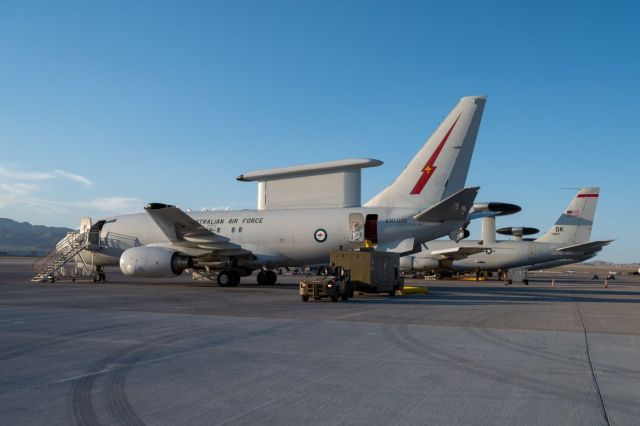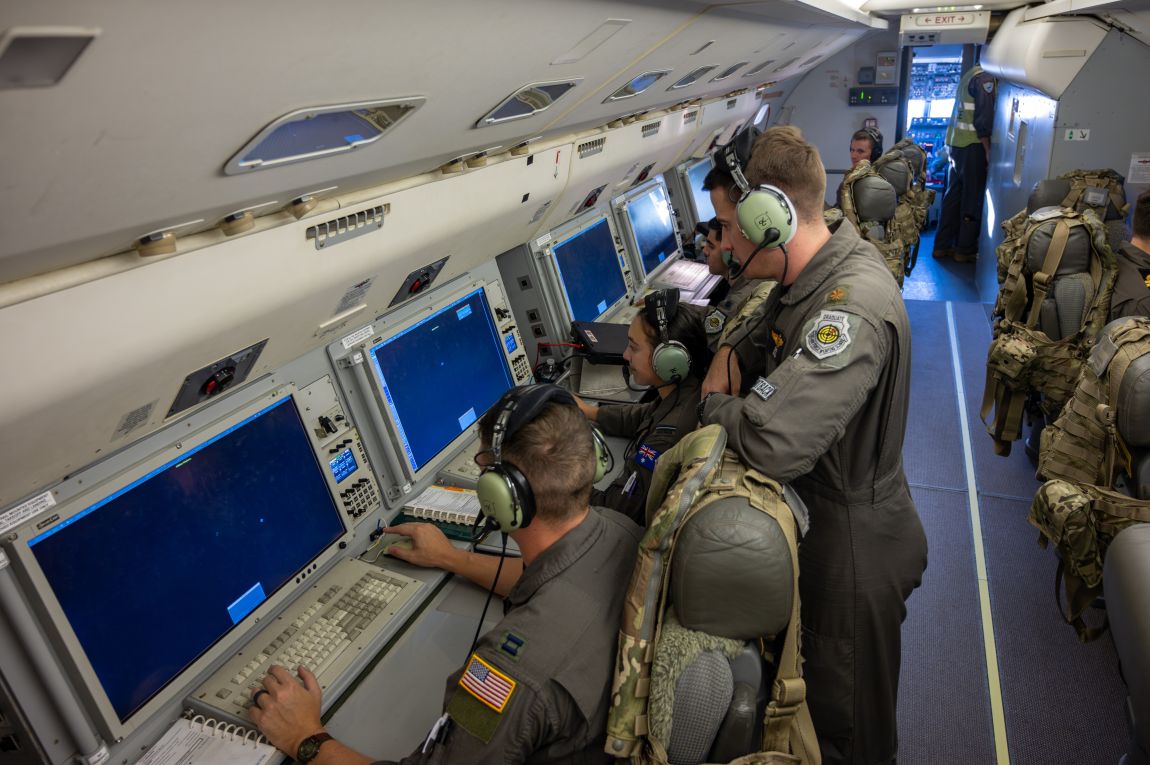 USAF learns E-7A capabilities and techniques from RAAF
USAF learns E-7A capabilities and techniques from RAAF
From 20 May through 12 June 2024, the USAF Weapons School at Nellis AFB (NV) hosted Royal Australian Air Force No. 2 Squadron, based at RAAF Williamtown (Australia).
During the aforementioned period, No. 2 Sq's Boeing E-7A Wedgetail A30-006 flew missions with integrated USAF/RAAF aircrew and alongside OK coded E-3G Sentry Airborne Warning and Control System (AWACS) aircraft. During April 2022, the Department of the Air Force (DAF) selected the E-7A to replace the aging Boeing E-3 Sentry fleet.
The RAAF flew their Wedgetail for the first time during the latest Weapons School’s INTegration (WSINT) phase at Nellis. This, as part of the USAF and RAAF joint exercises and training efforts to maximise the E-7A's command and control capabilities in combined operations. Also, the unique capabilities of the E-7A, the survivability and lethality of the joint and combined force (which also includes the Royal Air Force) has increased significantly. To further highlight the enduring nature of the combined partnership, RAAF's No. 2 Squadron has trained and continues to train USAF and RAF aircrew, maintainers and support staff.
For the USAF, the E-7A will be a critical node in the Air Force’s ability to gain and maintain air superiority in support of combatant commander priority missions. The Wedgetail will provide advanced airborne moving target indication and battle management, command and control capabilities. It also has an advanced multi-role electronically scanned array radar that enhances Airborne Battle
Management (ABM) and enables long-range kill chains against potential adversaries. 
In the past, the USAF and RAAF agreed to an expanded exchange programme to train with RAAF, Royal Australian Navy, US Navy and RAF aircrew and personnel, supporting the E-7A aircraft's USAF service introduction. These seventy Airmen, from thirteen career fields, will return from the programme by the end of 2024 and support its integration. In the end it is expected that the tri-lateral E-7A acquisition and operations initiative between the USAF, RAAF and RAF will lead to an interoperable and interchangeable coalition E-7A community.
Credit photos: USAF

